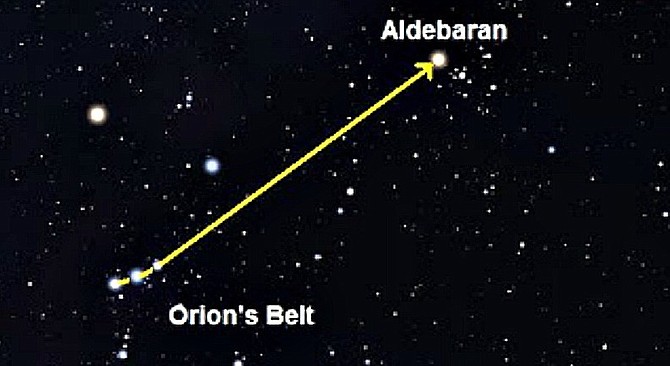 Facebook
Facebook
 X
X
 Instagram
Instagram
 TikTok
TikTok
 Youtube
Youtube

Very Low Tides early next week will provide opportunities for observing sea life in the lower intertidal zones. On Monday, January 11, the tide dips to -1.66 feet at 2:27 p.m. Tuesday’s low tide of -1.78 feet occurs at 3:09 p.m. Wednesday’s low tide of -1.67 feet happens at 3:50 p.m.
Recent Chilly Days and Nights confirm that San Diego’s lowest temperatures (according to more than a century of weather records) tend to occur during the month of January. January’s mean temperature at Lindbergh Field is about 55 degrees Fahrenheit. (July’s mean is a balmy 70 degrees.) To experience much colder temperatures, journey to the Cuyamacas; -1 and -4 degree readings were once recorded there — the two lowest temperatures ever recorded in the county.
Orange Aldebaran shines above Orion on January 7 with the large, loose Hyades cluster in its background. Binoculars are the ideal instrument for this cluster given its size: its brightest stars (4th and 5th magnitude) span an area about 4° wide. (Higher above, the Pleiades are hardly more than 1° across counting just the brightest stars.)
The main Hyades stars famously form a V. It's currently lying on its side. Aldebaran forms the lower tip of the V. With binoculars, follow the lower branch of the V to the right from Aldebaran. The first thing you come to is the House asterism: a pattern of stars like a child's drawing of a house with a peaked roof. The house is currently upright and bent to the right like it got pushed.
The above comes from the Outdoors listings in the Reader compiled by Jerry Schad, author of Afoot & Afield in San Diego County. Schad died in 2011. Planet information from SkyandTelescope.org.


Very Low Tides early next week will provide opportunities for observing sea life in the lower intertidal zones. On Monday, January 11, the tide dips to -1.66 feet at 2:27 p.m. Tuesday’s low tide of -1.78 feet occurs at 3:09 p.m. Wednesday’s low tide of -1.67 feet happens at 3:50 p.m.
Recent Chilly Days and Nights confirm that San Diego’s lowest temperatures (according to more than a century of weather records) tend to occur during the month of January. January’s mean temperature at Lindbergh Field is about 55 degrees Fahrenheit. (July’s mean is a balmy 70 degrees.) To experience much colder temperatures, journey to the Cuyamacas; -1 and -4 degree readings were once recorded there — the two lowest temperatures ever recorded in the county.
Orange Aldebaran shines above Orion on January 7 with the large, loose Hyades cluster in its background. Binoculars are the ideal instrument for this cluster given its size: its brightest stars (4th and 5th magnitude) span an area about 4° wide. (Higher above, the Pleiades are hardly more than 1° across counting just the brightest stars.)
The main Hyades stars famously form a V. It's currently lying on its side. Aldebaran forms the lower tip of the V. With binoculars, follow the lower branch of the V to the right from Aldebaran. The first thing you come to is the House asterism: a pattern of stars like a child's drawing of a house with a peaked roof. The house is currently upright and bent to the right like it got pushed.
The above comes from the Outdoors listings in the Reader compiled by Jerry Schad, author of Afoot & Afield in San Diego County. Schad died in 2011. Planet information from SkyandTelescope.org.
Comments